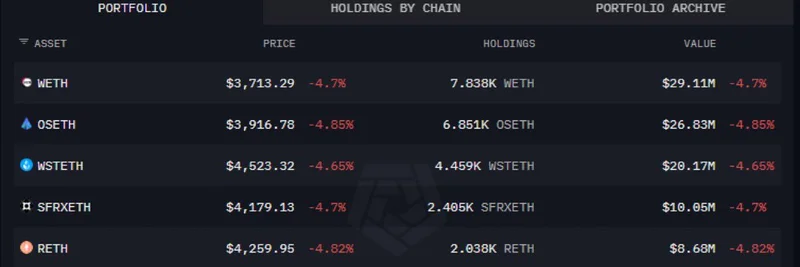In the ever-evolving world of decentralized finance (DeFi), security remains a top concern. Just today, a tweet from crypto influencer Mr. WHALE (@MrWhaleHQ) highlighted a massive exploit on Balancer, one of the leading DeFi protocols. The hacker reportedly drained over $116 million in various cryptocurrencies, sending shockwaves through the community. This incident underscores the risks in DeFi and why staying informed is crucial for anyone dabbling in meme tokens or blockchain tech.
For those new to the scene, Balancer is a decentralized exchange (DEX) built on Ethereum that lets users create and manage customizable liquidity pools. Think of it as a flexible automated market maker (AMM) where you can trade tokens, including popular meme coins, without a central authority. Its innovative design has made it a go-to for meme token launches and liquidity provision, but like many DeFi platforms, it's not immune to vulnerabilities.
Breaking Down the Balancer Exploit
According to on-chain data and reports from sources like The Block and BeInCrypto, the exploit involved unauthorized withdrawals from Balancer's vaults. Blockchain analysts, including PeckShield and Lookonchain, flagged suspicious transactions where large amounts of assets were transferred to an external wallet.
The root cause? A faulty smart contract check that allowed the attacker to bypass security measures and drain funds. This isn't Balancer's first rodeo—back in 2023, it suffered a smaller phishing-related loss of about $238,000. But this time, the scale is much larger, affecting multiple chains where Balancer operates.
Key assets drained include:
- Around 7,838 WETH (Wrapped Ether), valued at approximately $29.11 million.
- 6,851 osETH (Origin Staked Ether), worth about $26.83 million.
- 4,459 wstETH (Wrapped Staked Ether), totaling roughly $20.17 million.
- Other tokens like sfrxETH, rETH, rsETH, EZETH, and STS, pushing the total to over $116 million.
Here's a screenshot of the exploiter's portfolio, showcasing the hauled assets:
The attack was still ongoing as of the latest reports, with potential vulnerabilities extending to Balancer V2 forks—older versions of the protocol that might share the same flaw.
How Did the Hacker Pull This Off?
Smart contracts are the backbone of DeFi, essentially self-executing code that runs on the blockchain. In this case, a glitch in the verification process let the attacker manipulate withdrawals. It's like finding a loophole in a bank's ATM system that dispenses cash without deducting from your account—except on a massive, decentralized scale.
Experts like Mikko Ohtamaa from Trading Strategy pointed out the issue early on, emphasizing how even established protocols can have overlooked bugs. Balancer's team hasn't released an official statement yet, but the community is buzzing with calls for immediate audits and pauses on affected pools.
If there's another visual from the tweet, perhaps a transaction overview:
Implications for Meme Tokens and the Broader DeFi Ecosystem
Meme tokens thrive on platforms like Balancer because of its low barriers to entry for creating pools. Tokens like those inspired by viral trends or cultural phenomena often rely on these DEXs for initial liquidity. An exploit like this can lead to sudden price dumps, loss of trust, and even rug pulls if liquidity dries up.
For instance, if a meme token's pool was indirectly affected, traders could face slippage or frozen assets. Broader market reactions included a 4% drop in Balancer's native token, BAL, reflecting investor jitters. This event also highlights the interconnectedness of DeFi—vulnerabilities in one protocol can ripple across the ecosystem, impacting everything from stablecoins to high-risk meme plays.
At Meme Insider, we track these developments because meme tokens aren't just fun; they're part of a larger blockchain narrative. Events like this remind us that while the upside is huge, the risks are real.
Key Lessons for Blockchain Practitioners
Always Audit Thoroughly: Before deploying or interacting with smart contracts, insist on multiple audits from reputable firms like PeckShield or OpenZeppelin.
Diversify and Use Wallets Wisely: Don't keep all your eggs in one basket. Hardware wallets and multi-signature setups can add layers of protection.
Stay Updated: Follow reliable sources and communities on platforms like X (formerly Twitter) for real-time alerts. The original tweet that broke this news can be found here.
Understand the Tech: Terms like "vaults" refer to secure storage in DeFi protocols, while "forks" mean copied versions of code that might inherit bugs.
As we build a richer knowledge base here at meme-insider.com, incidents like the Balancer exploit serve as valuable case studies. They push the industry toward better security practices, ultimately making DeFi safer for meme token creators and traders alike. What are your thoughts on this hack? Share in the comments below!




